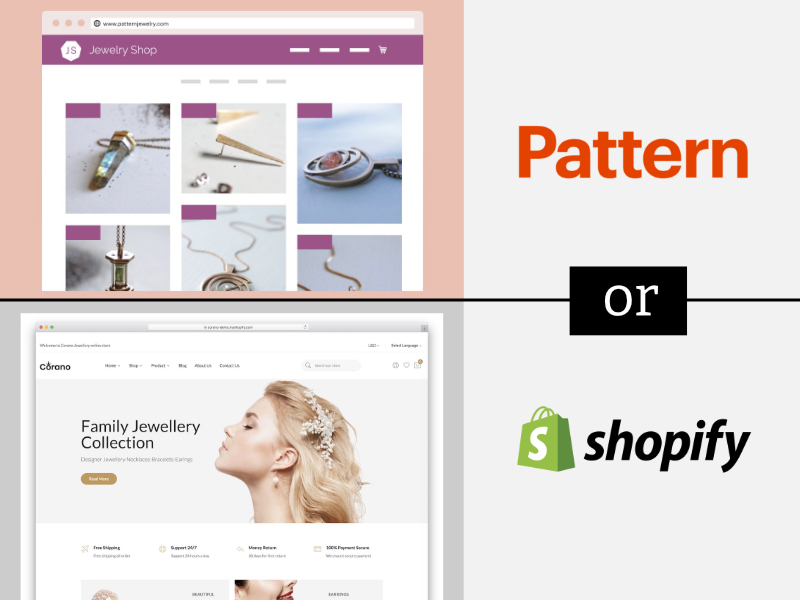
It’s hard to say no, right? Especially when you are running your own business. Business owners are always tempted to say “yes” to every opportunity they see. There is a belief that by saying “yes”, it leads to more sales and business growth. Unfortunately, this isn’t the case. It might sound counterintuitive, but success comes from knowing how and when to say “no”. An example of this case is constantly getting distracted by potential customers to target in the e-commerce environment. Maybe you women’s apparel and you think it would be a good idea to sell to activewear and loungewear. Or there’s some potential to sell maternity wear too. What about children’s swimwear? All these segments are different and I know it’s very tempting to try and serve all of them, especially if a customer reaches out and asks you if you sell them.

When a business offers a breadth of products that serve many different types of customers, they are at risk of stretching themselves too thin. Here, the business has found customers in various departments, but they are seeing more business in women’s activewear.

It’s more effective for a business to go deep than wide. Focusing in women’s activewear is a smarter choice.
The mistake merchants make with this approach is that it’s hard for them to develop a meaningfully differentiated brand. If they try to be a “yes” company and cater to many different customer segments who all have very different needs, then you end up generalizing your product too much. This approach is driven by a scarcity mindset, which triggers FOMO (fear of missing out). They are not confident that they can get sales so they try to cast a wider net. In the end, this will hurt their business, especially if they are just starting out. Trying to cater to a wide market requires a lot of resources to succeed. The only alternative is to identify a niche market.
Niching Down
Often times, getting more specific sounds like it is honing in on a target segment and ignoring the rest, but it’s far from that. The reality is that your marketing efforts are focused on a segment that has been ignored or underserved. So in essence, you will serve more people this way. If your thought process is that you want to serve as many people as possible, then what I’m hearing is that you want to build a company like Amazon. Which means you need loads of resources to achieve this. Generally, merchants just starting out cannot afford the costs of building another Amazon. So, the most effective way forward is to focus and niche down.
To niche down is to be different. It’s how you will stand out from the rest. There are many ways to identify a niche down. Let’s take a look at the greeting card category from Etsy sellers:
The products above are all different, none of them are exactly alike. From left to right, top to bottom, we have:
- Funny appreciative cards
- Embossed cards. botanical
- Printed pressed flower cards
- Greeting cards, watercolour
- Greeting cards, watercolour, floral
- Graduation cards, 3D pop out
- Funny coronavirus birthday card, printed
- Botanical greeting card
From left to right, top to bottom, we have:
- Funny congratulation card, 3D pop out, floral
- Greeting card made with construction paper
- Greeting card printed, large text
- Love Island greeting card
- Pikachu greeting card, funny
- Drake greeting card, funny
- Funny greeting card
- Greeting card bundle
This might get a bit academic, but stay with me. We can see that these are the two dimensions for a product to be different:
- Material (type of cardstock, size of card, card colour)
- Content (designs, illustrations, text, tone, style)
Everyone has access to the same suppliers and the materials in the stationery space (material would be more relevant in the technology space where certain hardware is only accessible to specific companies, e.g. Apple). The only way for stationery to differentiate would be content. Content would refer to how materials are put together to convey a message. Based on the examples above, this is how content gets differentiated:
- Style: watercolour, construction paper, 3D pop out, digital art
- Topic: popular media (Drake, Pikachu), flowers
- Tone: funny, sarcastic, encouraging, positive
The question here is how does one focus all these elements for content to meaningfully differentiate in the market? What matters? In the case of Drake and Pikachu, they are targeting a younger demographic. For the cards with flowers, they target women who have more mature tastes (there are too many cards with floral designs, something to consider when differentiating). But, if a merchant just appeals to certain demographics in this way, then they become too interchangeable. Because the reality is, anyone else can do the same.
It’s so easy for anyone to make a funny remark and paste it on a card. The ones that are more technical, like the watercolours might be harder to mimic, but then there are no shortages of artists. So, we need to think deeper about being more competitive. Let’s break this down.
When a customer is faced with options, they can afford to be choosy. As a small business, it is very important to make it clear who you are targeting. Every business needs to consider three levels of competitors: primary, secondary, and tertiary.
Primary competitors compete directly with you, all Etsy sellers are each other’s primary competitor. Secondary competitors offer similar products but they are high-end or low-end version, in this case it would be Hallmark. Finally, tertiary competitors are those that compete with different products, but solving the same customer jobs. In this example, customers could opt to purchase chocolates instead of a greeting card. The ultimate competitor every merchant has to consider is Amazon. If you can’t tell me why your offering is different than what I find on Amazon, then you are going to struggle. Below is an example of Worthwhile Paper, a small stationery business based in Michigan.
Amazon’s mission statement is: “We strive to offer our customers the lowest possible prices, the best available selection, and the utmost convenience”. So that means if you try to compete with Amazon on price, selection, and convenience, chances are you are going to lose (given if you are selling the same products). Ok, then that means you need to sell products and services that are hard to find on Amazon. One specific advantage all small business owners have is the ability to build a personable relationship with customers. If a customer reached out to you on Instagram for questions, you can answer them and build trust. This is a lot harder to do on Amazon. Hallmark sell similar products to Worthwhile Paper, but it has the Amazon problem, which is lack of connection. If you wanted to purchase a card online, you won’t get that opportunity to build a relationship with a merchant. It’s not there. Worthwhile Paper would also differentiate by being responsive to her market. Hallmark creates products that appeal to everyone at a high level.
Understanding how to compete with primary competitors like other Etsy sellers is hard to figure out. It takes trial and error and a paying attention to the world. First, follow the exercise in my previous article about identifying customer segments. This will largely be based on your assumptions and what you’ve heard from social media and the news. Identify the bare minimum on what your ideal customer looks like, what are important attributes they must have? If you sell traditional office chairs, then they need to live in a permanent space (e.g. digital nomads aren’t going to make sense). If you sell organic skincare, then the bare minimum is that they care about their health and overall appearance. Another could be location, do they live in your country? It’s always easier to start locally then expand as you have market validation from sales. Do they have a certain style preference? Maybe they like cute or anime-like designs. Next, identify several segments that meet the criteria for the bare minimum. For the office chair example, maybe they are freelance designers or a new tech startup. Then, plot out a customer profile for each segment. The most important section is the customer jobs section. It gets really interesting here because you can identify high-level jobs that motivates customers to buy. Here’s an example with one of my clients.
She sells stationery and has a large selection of greeting cards. We created a customer profile of a designer who is buying someone a gift. As we mapped out their jobs, we learned that people who buy gifts ultimately want to build meaningful relationships. This is a profound insight, because we could take this job and intersect in so many ways. How could she create stationery products that help a small business owner create meaningful relationships with clients and employees? How could stationery promote a positive company culture? Or, she could niche down into young couples. It’s hard to be in a relationship and she could design thoughtful stationery kits or prompts that help couples communicate. She has endless options to explore.
What’s interesting about being very specific when you start a business, is that it helps you strategically increase your market size. Starting small and niching, it feels like you are excluding people. But, once you identify a core value proposition, you leverage that to expand into relevant markets. OXO is a great example of this. Their products are united by the rubber grip that defines how their handles look and feel.

Oxo Set from William Sonoma (https://www.williams-sonoma.com/products/oxo-good-grips-18-piece-utensil-set/)
The OXO products below go beyond their handle grip line, but still incorporate some key component around the non-slip design.


OXO containers with rubber lids and the salad spinner with non-slip base.
Go Beyond the Product
To start being meaningfully different in the market, you need to go beyond the product. If you tell me you sell products, then that’s just not enough. Anyone else can also sell the same products you offer. Instead, consider the outcomes on a psychological level. How do your products help customers feel better about themselves? How does it allow them save more time? Could you create a meaningful community around their products? If you think deeper, you will find a pocket of customers that are ignored or underserved.
A way to test if you have created a meaningful product is this: if your brand disappeared, would customers notice?
If you start to think more deeply about customers, then I have no doubt that you will build a brand that customers want to buy from.
Comments









